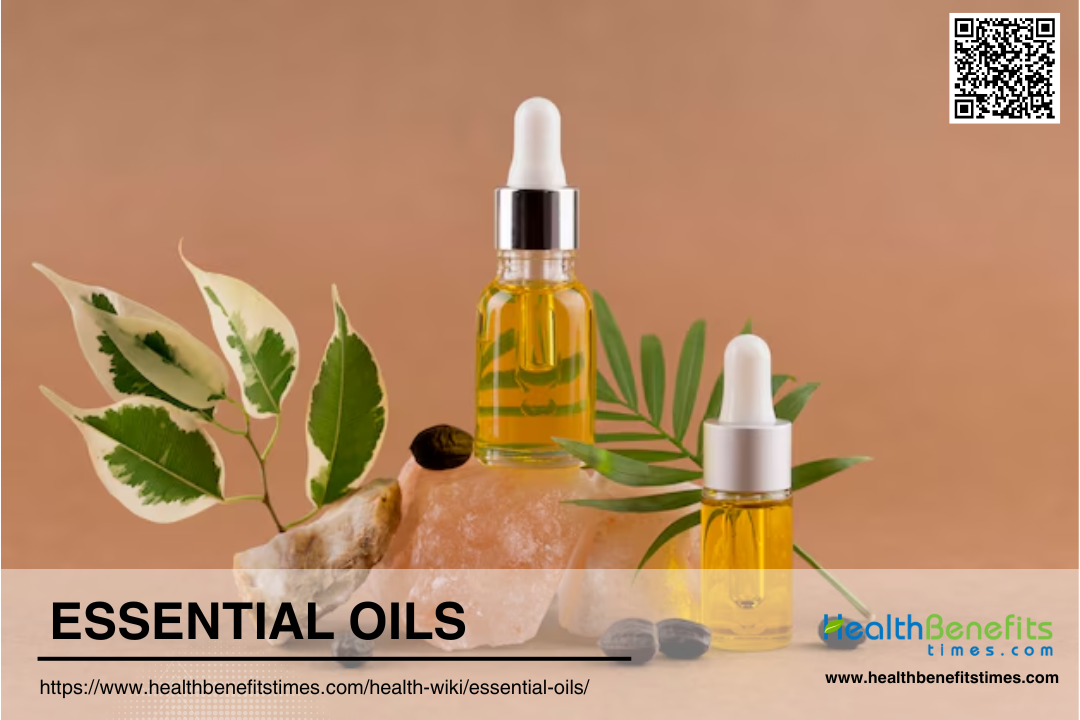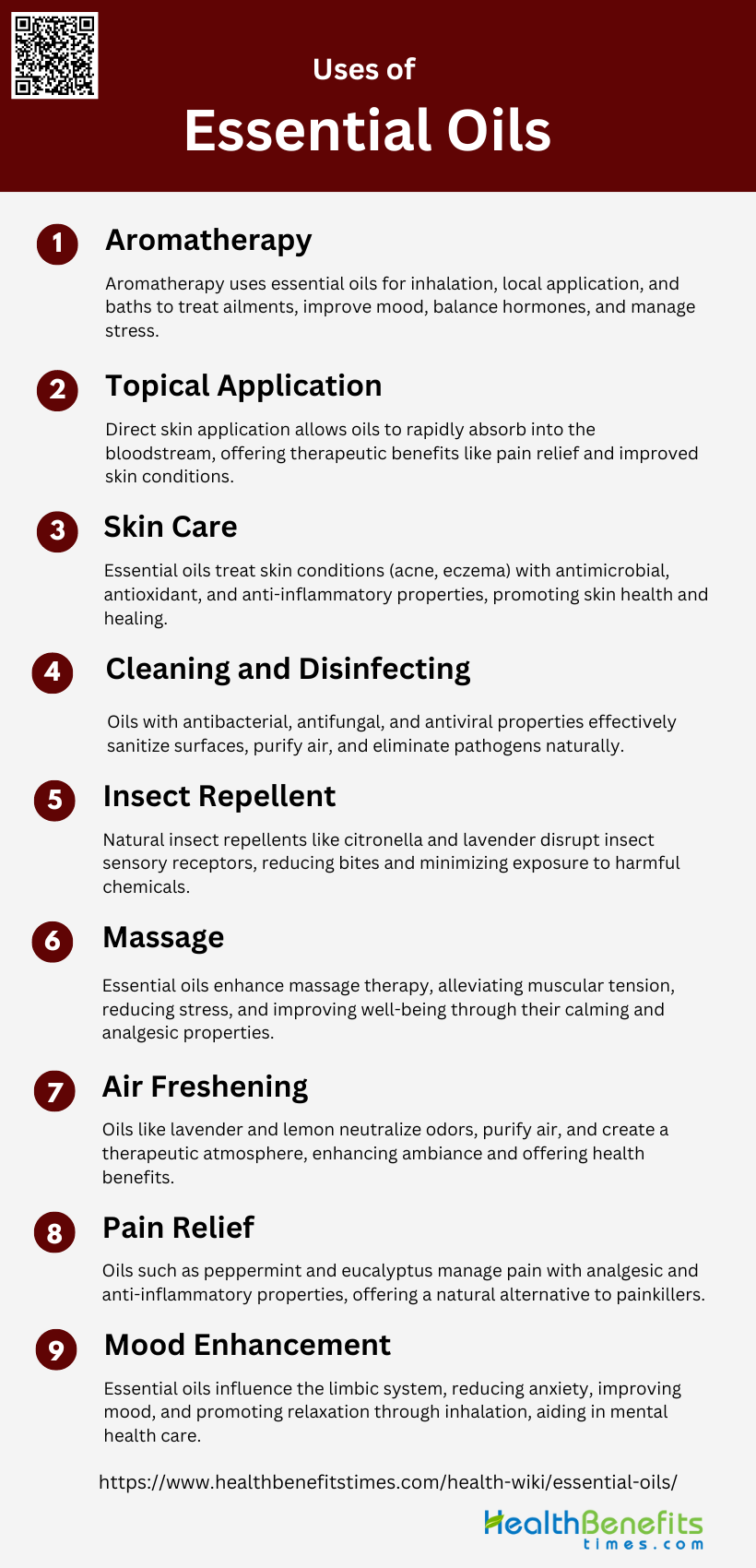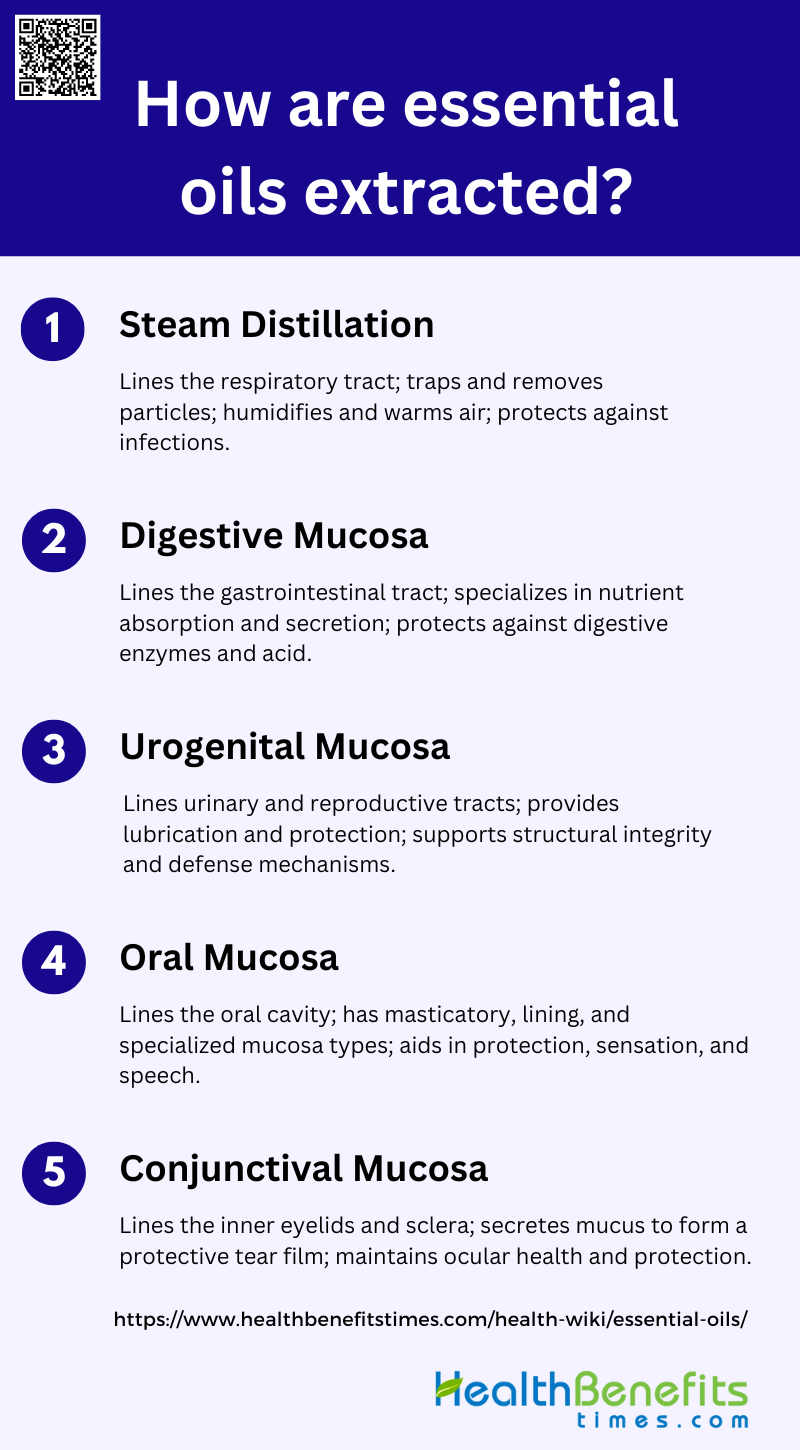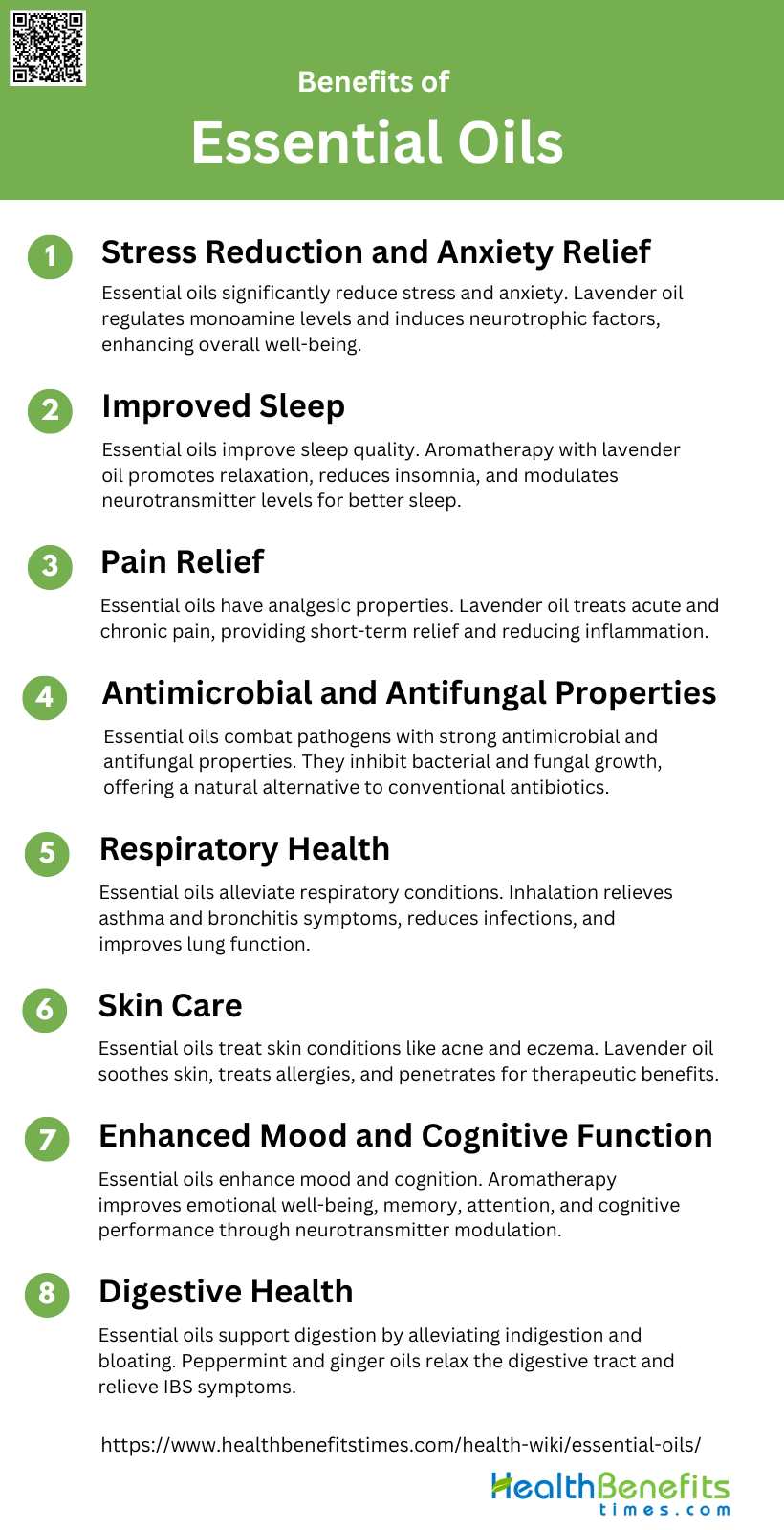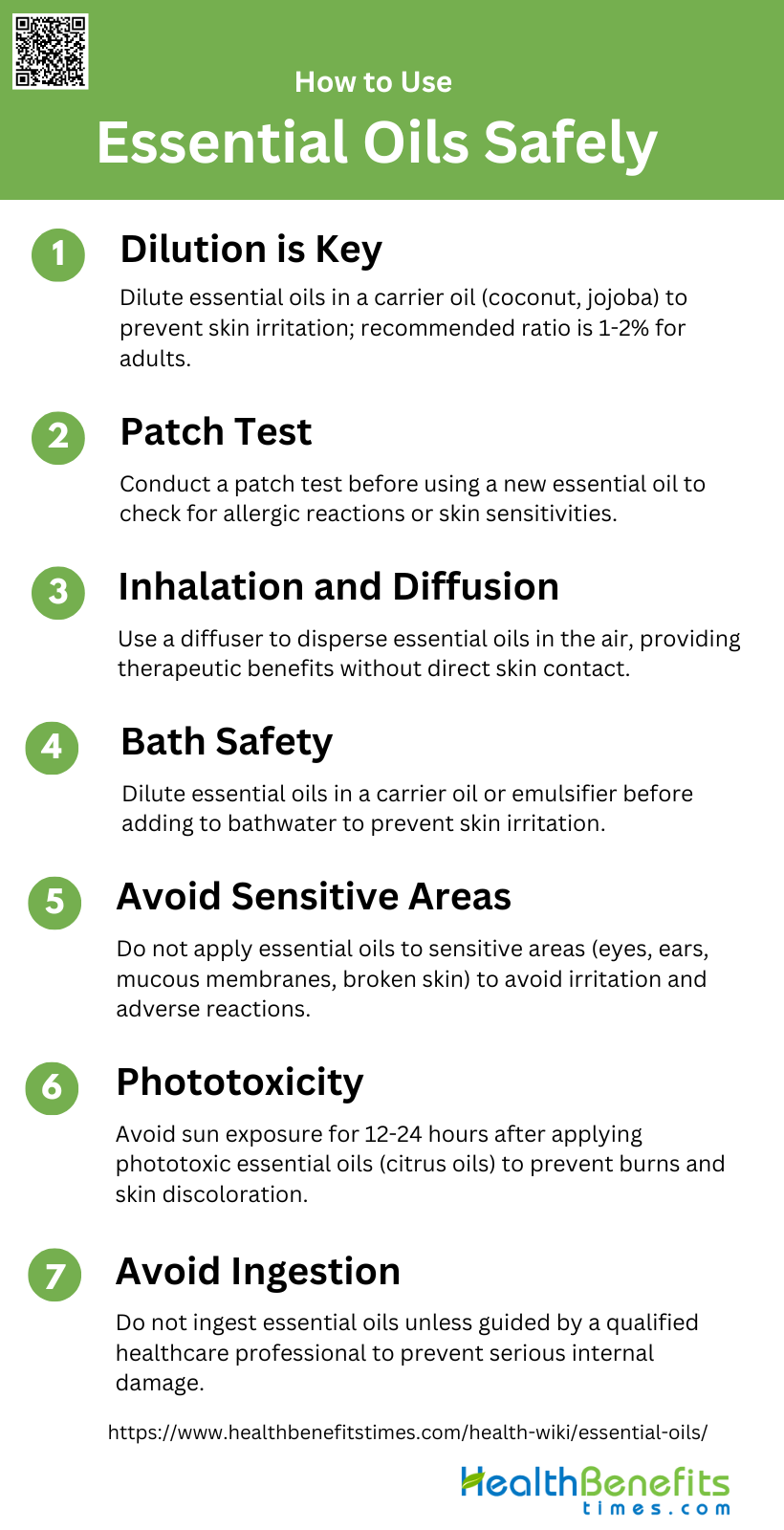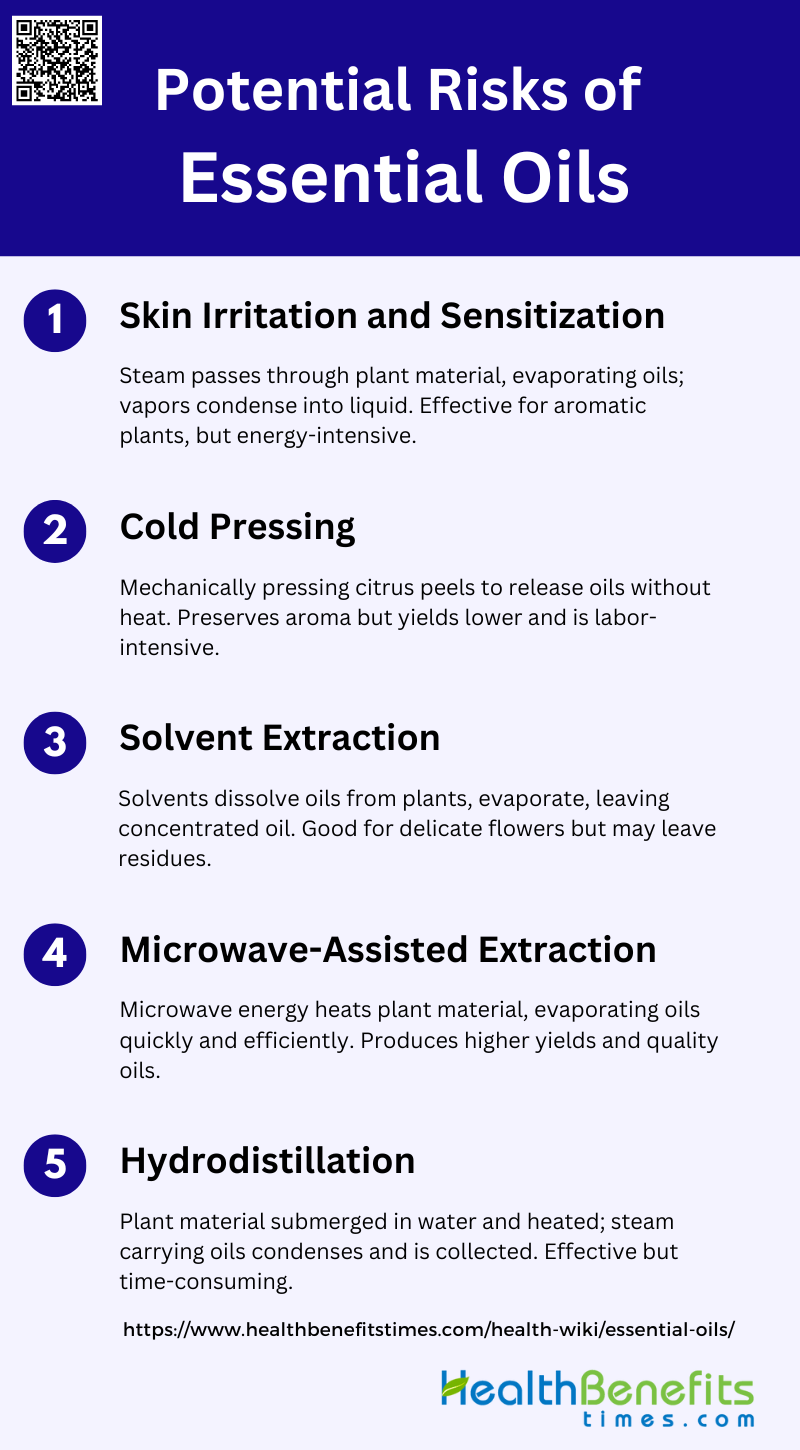Essential oils are concentrated volatile compounds extracted from various parts of plants, including leaves, flowers, stems, roots, and bark. These aromatic substances are responsible for the distinctive scents of many plants and are obtained through methods such as steam distillation, cold pressing, or solvent extraction. Chemically complex, essential oils are composed of numerous organic substances, including alcohols, acetones, ketones, ethers, and aldehydes. They are typically liquid at room temperature and possess a range of therapeutic properties, making them popular in aromatherapy, alternative medicine, and the cosmetic industry. Essential oils are widely distributed in nature, found in diverse plant families such as conifers, myrtaceae, rutaceae, and labiatae. Their composition and properties can vary depending on factors like the plant’s origin, growing conditions, and the specific part of the plant used for extraction. While essential oils offer potential benefits, it’s important to note that they are potent substances and should be used with caution, as they can also pose risks if not properly handled or applied.
How are essential oils extracted?
Essential oils are extracted through various methods; each suited to different types of plant materials and desired oil properties. The most common methods include:
1. Steam Distillation
Steam distillation is a traditional method used to extract essential oils from plant materials. In this process, steam is passed through the plant material, causing the essential oils to evaporate. The steam and oil vapors are then condensed back into liquid form and collected. This method is effective for extracting oils from lavender and other aromatic plants, although it can be time-consuming and energy-intensive.
2. Cold Pressing
Cold pressing, also known as expression, is primarily used for extracting essential oils from citrus fruits. In this method, the outer peel of the fruit is mechanically pressed to release the essential oils. This technique does not involve heat, which helps in preserving the natural aroma and properties of the oil. However, the yield is generally lower compared to other methods, and the process can be labor-intensive.
3. Solvent Extraction
Solvent extraction involves using a solvent, such as hexane or ethanol, to dissolve the essential oils from the plant material. The solvent is then evaporated, leaving behind the concentrated essential oil. This method is particularly useful for extracting oils from delicate flowers that might be damaged by heat. However, it may leave behind solvent residues, which can affect the purity of the oil.
4. Microwave-Assisted Extraction
Microwave-Assisted Extraction (MAE) uses microwave energy to heat the plant material, causing the essential oils to evaporate. This method is faster and more energy-efficient compared to traditional techniques. It also tends to produce higher yields and better quality oils with higher oxygenated compound content. MAE can be combined with other methods, such as steam distillation, to further enhance efficiency.
5. Hydrodistillation
Hydrodistillation is another traditional method where plant material is submerged in water and heated to release essential oils. The steam carrying the essential oils is then condensed and collected. This method is commonly used for extracting oils from herbs like rosemary and lavender. While effective, it is also time-consuming and requires significant energy input.
Common Types of Essential Oils
Essential oils have been used for centuries for their therapeutic and aromatic benefits. Each type of essential oil offers unique properties and uses, making them versatile tools in natural health and wellness. Below are some of the most common types of essential oils and their benefits:
1. Lavender Essential Oils
Lavender essential oil, derived from the Lavandula angustifolia plant, is renowned for its calming and relaxing properties. It has been widely used in aromatherapy to alleviate stress, anxiety, and depression. Additionally, lavender oil has shown significant potential in increasing salivary oxytocin concentrations, which may help inhibit aging-induced reduction in muscle mass and function in postmenopausal women. Its chemical composition includes linalool and linalyl acetate, which contribute to its therapeutic effects.
2. Peppermint Essential Oils
Peppermint essential oil, extracted from Mentha piperita, is known for its invigorating and refreshing properties. It has been used to relieve headaches, muscle pain, and digestive issues. Studies have shown that peppermint oil exhibits CNS stimulant-like effects, increasing the response rate in conditioned avoidance tasks in mice. Its primary components, menthol and menthone, contribute to its therapeutic benefits and its ability to inhibit methicillin-resistant Staphylococcus aureus (MRSA).
3. Tea Tree (Melaleuca)
Tea tree oil, derived from Melaleuca alternifolia, is celebrated for its potent antimicrobial and anti-inflammatory properties. It is commonly used to treat skin conditions such as acne, fungal infections, and wounds. The oil’s efficacy against various pathogens, including MRSA, highlights its potential as an alternative therapy for bacterial infections. Its main active components, terpinen-4-ol and alpha-terpineol, are responsible for its therapeutic effects.
4. Eucalyptus
Eucalyptus oil, obtained from Eucalyptus globulus, is widely recognized for its respiratory benefits. It is often used to relieve symptoms of colds, coughs, and sinus congestion. Eucalyptus oil has demonstrated significant inhibitory activity against MRSA, making it a valuable antimicrobial agent. Its primary constituents, eucalyptol and alpha-terpineol, contribute to its effectiveness in treating respiratory ailments and infections.
5. Lemon
Lemon essential oil, extracted from Citrus limon, is known for its uplifting and energizing properties. It is commonly used in aromatherapy to reduce stress and anxiety. Lemon oil has also shown potential in inhibiting MRSA, highlighting its antimicrobial properties. Its main components, limonene and beta-pinene, are responsible for its therapeutic effects and its ability to enhance mood and cognitive function.
6. Frankincense
Frankincense oil, derived from the resin of Boswellia trees, has been used for centuries for its spiritual and medicinal properties. It is known for its anti-inflammatory, immune-boosting, and stress-relieving effects. Frankincense oil has shown potential in increasing salivary oxytocin concentrations, which may help mitigate aging-related muscle loss in postmenopausal women. Its primary constituents, alpha-pinene and boswellic acids, contribute to its therapeutic benefits.
7. Chamomile
Chamomile essential oil, extracted from Matricaria chamomilla, is renowned for its calming and soothing properties. It is commonly used to alleviate stress, anxiety, and insomnia. Chamomile oil has demonstrated CNS stimulant-like effects, increasing the response rate in conditioned avoidance tasks in mice. Its main active components, chamazulene and alpha-bisabolol, are responsible for its therapeutic effects and its ability to promote relaxation and sleep.
8. Rose
Rose essential oil, derived from Rosa damascena, is celebrated for its luxurious fragrance and therapeutic properties. It is commonly used in aromatherapy to reduce stress, anxiety, and depression. Rose oil has shown potential in decreasing the avoidance rate in conditioned avoidance tasks in mice, indicating its CNS acting effects. Its primary constituents, citronellol and geraniol, contribute to its mood-enhancing and calming effects.
9. Ylang-Ylang
Ylang-ylang essential oil, obtained from Cananga odorata, is known for its sweet, floral aroma and relaxing properties. It is often used in aromatherapy to alleviate stress, anxiety, and depression. Ylang-ylang oil has demonstrated significant anti-inflammatory and wound healing properties in human skin cells. Its main components, linalool and germacrene D, contribute to its therapeutic effects and its ability to promote emotional well-being.
10. Sandalwood
Sandalwood essential oil, derived from Santalum album, is prized for its woody, earthy scent and calming properties. It is commonly used in aromatherapy to reduce stress, anxiety, and promote mental clarity. Sandalwood oil has shown potential in increasing salivary oxytocin concentrations, which may help inhibit aging-induced muscle loss in postmenopausal women. Its primary constituents, alpha-santalol and beta-santalol, are responsible for its therapeutic benefits and its ability to enhance relaxation and focus.
Uses of Essential Oils
Essential oils are versatile and can be used in various ways to enhance well-being and health. From aromatherapy to topical applications, these oils offer numerous benefits. Below are some common uses of essential oils:
1. Aromatherapy
Aromatherapy utilizes essential oils extracted from various plant parts to treat numerous ailments through inhalation, local application, and baths. These oils penetrate the skin and work at the site of malfunction, providing relief from conditions such as depression, insomnia, muscular pain, and respiratory problems. The therapeutic effects are enhanced when combined with lifestyle and dietary changes. Aromatherapy is also known to improve mood, balance hormones, and manage stress, making it a popular complementary therapy in modern holistic health care.
2. Topical Application
Topical application of essential oils involves direct application to the skin, allowing rapid absorption into the bloodstream. This method is commonly used in clinical aromatherapy to manage symptoms in critically ill patients, providing measurable therapeutic outcomes. Essential oils can act as natural skin penetration enhancers, facilitating transdermal drug delivery and offering therapeutic benefits such as pain relief and improved skin conditions. However, caution is advised due to potential risks like allergic contact dermatitis and phototoxicity.
3. Skin Care
Essential oils are widely used in skin care for their antimicrobial, antioxidant, and anti-inflammatory properties. They help treat various skin conditions, including acne, eczema, and psoriasis, by promoting skin health and healing. Essential oils like lavender and tea tree oil are particularly popular for their soothing and antiseptic qualities. However, prolonged use can lead to skin irritation or allergic reactions, emphasizing the need for careful application and monitoring.
4. Cleaning and Disinfecting
Essential oils possess strong antibacterial, antifungal, and antiviral properties, making them effective natural cleaning and disinfecting agents. They can be used to sanitize surfaces, purify the air, and eliminate harmful pathogens without the harsh chemicals found in conventional cleaning products. Essential oils like tea tree, eucalyptus, and lemon are commonly used for their potent antimicrobial effects, contributing to a healthier and safer living environment.
5. Insect Repellent
Essential oils serve as natural insect repellents, offering a safer alternative to synthetic chemicals. Oils such as citronella, eucalyptus, and lavender are effective in repelling mosquitoes, ticks, and other pests. Their volatile compounds disrupt the sensory receptors of insects, reducing the likelihood of bites and stings. This natural approach not only protects against insect-borne diseases but also minimizes exposure to potentially harmful chemicals.
6. Massage
Massage therapy often incorporates essential oils to enhance relaxation and therapeutic effects. The combination of massage and essential oils can alleviate muscular tension, reduce stress, and improve overall well-being. Essential oils like lavender, chamomile, and peppermint are frequently used for their calming and analgesic properties. This integrative approach promotes both physical and psychological health, making it a popular choice in spa and wellness treatments.
7. Air Freshening
Essential oils are commonly used in air freshening to create a pleasant and therapeutic atmosphere. Their aromatic compounds can neutralize odors, purify the air, and provide a sense of well-being. Oils like lavender, lemon, and eucalyptus are popular choices for their refreshing and uplifting scents. This natural method of air freshening not only enhances the ambiance but also offers potential health benefits through inhalation.
8. Pain Relief
Essential oils are effective in managing pain through their analgesic and anti-inflammatory properties. They can be applied topically or used in aromatherapy to alleviate headaches, muscle pain, and joint discomfort. Oils like peppermint, eucalyptus, and rosemary are known for their pain-relieving effects. This natural approach to pain management provides an alternative to conventional painkillers, with fewer side effects.
9. Mood Enhancement
Essential oils play a significant role in mood enhancement by influencing the limbic system, the brain’s emotional center. Inhalation of oils like lavender, bergamot, and ylang-ylang can reduce anxiety, improve mood, and promote relaxation. Aromatherapy using these oils is particularly beneficial in managing stress and emotional well-being, making it a valuable tool in mental health care.
How Essential Oils Work
Essential oils have been used for centuries for their therapeutic properties. They can be utilized in various ways to promote physical and emotional well-being. Below are some key mechanisms through which essential oils exert their effects:
1. Absorption through the Skin
Essential oils (EOs) can be absorbed through the skin, where they interact with various bodily systems. The skin’s permeability allows the active components of EOs to penetrate and enter the bloodstream, influencing systemic functions. For instance, the chemical components of EOs can activate gamma-aminobutyric acid (GABA) receptors and transient receptor potential (TRP) channels, which play roles in modulating physiological responses. This transdermal absorption can lead to therapeutic effects, such as the regulation of mood and reduction of anxiety and depression symptoms. Additionally, the distribution of EO components in the body, such as the brain and liver, can vary depending on whether the EO is applied as a single component or a mixture, affecting their overall efficacy.
2. Inhalation and the Impact on the Brain and Emotions
Inhalation is a primary route through which essential oils exert their effects on the brain and emotions. When inhaled, EOs bypass the blood-brain barrier via the nasal-brain pathway, directly impacting brain regions such as the cerebral cortex, thalamus, and limbic system. This mechanism is particularly effective in treating mood disorders, including anxiety, depression, and sleep disturbances. Inhalation of EOs has been shown to regulate neurotransmitter levels, such as dopamine, and influence brain wave activity, leading to improved mood and emotional states. Clinical studies have demonstrated that inhalation of specific EOs, like lavender and rosemary, can enhance cognitive performance, reduce stress, and improve overall mental health.
3. Interaction with Bodily Systems (Nervous, Circulatory, etc.)
Essential oils interact with multiple bodily systems, including the nervous, circulatory, and endocrine systems. The nervous system, in particular, is significantly influenced by EOs, which can modulate neurotransmitter activity and induce neurogenesis, leading to anxiolytic, antidepressant, and neuroprotective effects. EOs also impact the circulatory system by affecting blood pressure, heart rate, and respiratory rate, as evidenced by studies on rosemary oil inhalation. Furthermore, EOs can influence the endocrine system by regulating hormonal levels, which contributes to their therapeutic effects on mood and emotional well-being. These interactions highlight the multifaceted roles of EOs in promoting health and treating various physiological and psychological conditions.
Benefits of Essential Oils
Essential oils offer a range of benefits that can enhance physical, emotional, and mental well-being. They are versatile and can be used in various ways to support health and wellness. Below are some of the key benefits of essential oils:
1. Stress Reduction and Anxiety Relief
Essential oils have been shown to significantly reduce stress and anxiety levels. Lavender essential oil, in particular, has demonstrated efficacy in alleviating symptoms of anxiety and depression through mechanisms such as the regulation of monoamine levels and the induction of neurotrophic factor expression. Aromatherapy using essential oils has been found to provide short-term improvements in anxiety and depression scores, enhancing overall well-being. Additionally, inhalation of essential oils can regulate brain functions associated with mood, reflecting their bioavailability to the brain.
2. Improved Sleep
Essential oils are also beneficial for improving sleep quality. Studies have shown that aromatherapy can lead to better sleep patterns and reduced insomnia. For instance, lavender oil is widely recognized for its ability to promote relaxation and improve sleep quality. Clinical trials have reported that essential oils can enhance sleep by reducing anxiety and stress, which are common barriers to restful sleep. The neuroprotective properties of essential oils also contribute to better sleep by modulating neurotransmitter levels and promoting a calming effect on the nervous system.
3. Pain Relief
Essential oils possess analgesic properties that make them effective in pain relief. Lavender oil, for example, has been found useful in treating both acute and chronic pain. Aromatherapy has been shown to provide short-term relief from pain, muscular tension, and fatigue, particularly in cancer patients. The anti-inflammatory properties of essential oils further contribute to their pain-relieving effects, making them a valuable alternative or complementary treatment for pain management.
4. Antimicrobial and Antifungal Properties
Essential oils exhibit strong antimicrobial and antifungal properties, making them effective in combating various pathogens. Studies have demonstrated that essential oils can inhibit the growth of bacteria such as S. aureus and fungi like C. albicans. These properties are attributed to the presence of phenolic compounds and other active components in essential oils, which disrupt microbial cell membranes and inhibit biofilm formation. This makes essential oils a promising natural alternative to conventional antibiotics and antifungal agents.
5. Respiratory Health
Essential oils can also benefit respiratory health by alleviating symptoms of respiratory conditions. Inhalation of essential oils can act directly on the respiratory tract, providing relief from conditions such as asthma and bronchitis. The anti-inflammatory and antimicrobial properties of essential oils help in reducing respiratory infections and improving overall lung function. Additionally, essential oils can modulate the secretion of mucus and ease breathing, making them effective in managing respiratory ailments.
6. Skin Care
Essential oils are widely used in skincare due to their antiseptic and anti-inflammatory properties. They can treat various skin conditions, including acne, eczema, and fungal infections. Lavender oil, in particular, is known for its skin-soothing properties and is effective in treating allergies and skin irritations. The ability of essential oils to penetrate the skin and deliver therapeutic benefits makes them a popular choice in cosmetic and dermatological applications.
7. Enhanced Mood and Cognitive Function
The use of essential oils can enhance mood and cognitive function. Aromatherapy has been shown to improve emotional well-being and cognitive performance by modulating neurotransmitter levels and activating different brain regions. Essential oils like lavender and rosemary have been found to improve memory, attention, and overall cognitive function. The neuroprotective effects of essential oils also contribute to their ability to enhance mood and cognitive health.
8. Digestive Health
Essential oils can support digestive health by alleviating symptoms of indigestion, bloating, and other gastrointestinal issues. They possess antispasmodic and anti-inflammatory properties that help in relaxing the digestive tract and reducing discomfort. Essential oils like peppermint and ginger are particularly effective in promoting digestive health and relieving symptoms of irritable bowel syndrome (IBS). Their ability to modulate gut microbiota and improve digestive function makes them a valuable addition to digestive health management.
How to Use Essential Oils Safely
Using essential oils safely is crucial to avoid adverse reactions and maximize their benefits. Proper usage involves understanding dilution ratios, application methods, and potential contraindications. Below are some guidelines for safe essential oil use:
1. Dilution is Key
Essential oils are highly concentrated and can cause skin irritation or sensitization if applied directly. Diluting essential oils in a carrier oil, such as coconut or jojoba oil, is crucial to minimize adverse reactions. The recommended dilution ratio is typically 1-2% for adults, which equates to about 6-12 drops of essential oil per ounce of carrier oil. Proper dilution not only ensures safety but also enhances the absorption and efficacy of the essential oils. Healthcare professionals emphasize the importance of dilution to prevent potential toxic effects and skin reactions.
2. Patch Test
Before using a new essential oil, conducting a patch test is essential to check for allergic reactions or skin sensitivities. Apply a small amount of the diluted essential oil to a patch of skin, such as the inner forearm, and wait for 24 hours to observe any adverse reactions like redness, itching, or swelling 5. This precautionary step helps identify potential allergens and prevents widespread skin irritation. Given the increasing reports of allergic contact dermatitis associated with essential oils, patch testing is a recommended practice.
3. Inhalation and Diffusion
Inhalation and diffusion are popular methods for using essential oils, offering therapeutic benefits without direct skin contact. Using a diffuser, add a few drops of essential oil to water and allow the aroma to disperse in the air. This method is generally safe and effective for mood enhancement, respiratory support, and relaxation. However, it is important to use essential oils in well-ventilated areas and avoid prolonged exposure to prevent respiratory irritation or sensitization.
4. Bath Safety
Adding essential oils to bathwater can provide a relaxing and aromatic experience, but it requires caution. Essential oils should be properly diluted in a carrier oil or an emulsifier like milk or Epsom salts before adding to the bath to prevent skin irritation. Direct contact with undiluted essential oils in bathwater can cause burns or allergic reactions. It is also advisable to avoid using hot water, as it can enhance the absorption of essential oils, potentially leading to adverse effects.
5. Avoid Sensitive Areas
Essential oils should never be applied to sensitive areas such as the eyes, ears, mucous membranes, or broken skin. These areas are more prone to irritation and adverse reactions due to the high concentration of active compounds in essential oils. If accidental contact occurs, it is important to rinse the area with a carrier oil rather than water, as water can spread the oil and worsen the irritation. Proper application techniques and awareness can prevent unnecessary discomfort and potential harm.
6. Phototoxicity
Certain essential oils, particularly citrus oils like bergamot, lemon, and lime, can cause phototoxic reactions when exposed to sunlight or UV light. Phototoxicity can result in severe burns, blisters, and skin discoloration. To avoid this, it is recommended to avoid sun exposure for at least 12-24 hours after applying phototoxic essential oils to the skin. Using these oils in diffusers or in products not exposed to sunlight can mitigate the risk of phototoxic reactions .
7. Avoid Ingestion
Ingesting essential oils is generally not recommended unless under the guidance of a qualified healthcare professional. Essential oils are potent and can cause serious internal damage, including liver and kidney toxicity, if ingested improperly. The safety profile of essential oils for internal use is not well-established, and adverse reactions can be severe. It is crucial to follow professional advice and use essential oils externally or through inhalation to ensure safe and effective use.
Potential Risks of Essential oils
While essential oils offer numerous benefits, they also come with potential risks if not used properly. It is important to be aware of these risks to ensure safe and effective use. Below are some potential risks associated with essential oils:
1. Skin Irritation and Sensitization
Essential oils (EOs) are widely used in various products, but they can cause skin irritation and sensitization, especially when oxidized during storage or transportation. For instance, tea tree oil (TTO) has been reported to cause skin irritation at higher concentrations and allergic reactions in predisposed individuals due to oxidation products formed by exposure to light and air. Additionally, phenolic compounds such as carvacrol, thymol, and eugenol, commonly found in EOs, have been associated with skin irritation, inflammation, and dermatitis in humans. Therefore, it is crucial to use EOs at appropriate concentrations and ensure proper storage to minimize these risks.
2. Toxicity if Ingested
Ingesting essential oils can be highly toxic and pose significant health risks. For example, tea tree oil (TTO) is known to be toxic if ingested in higher doses, potentially leading to developmental toxicity. Similarly, phenolic compounds like carvacrol, thymol, and eugenol have shown adverse effects in animal studies, including oxidative stress and organ damage. The ingestion of EOs can result in severe symptoms such as nausea, vomiting, necrosis, and nephropathy, highlighting the importance of avoiding oral consumption of these oils. Proper labeling and public awareness are essential to prevent accidental ingestion and associated toxic effects.
3. Respiratory Issues
The inhalation of essential oils can lead to respiratory issues due to the emission of volatile organic compounds (VOCs). A study analyzing 14 commercially available EOs found that they emitted 1034 VOCs, with 251 classified as potentially hazardous, including acetaldehyde, limonene, and methanol. These VOCs can exacerbate respiratory conditions such as asthma and cause irritation to the respiratory tract. Additionally, certain EOs used in aromatherapy for respiratory tract infections may have antimicrobial properties but can also pose toxicity risks if not used correctly. Therefore, caution is advised when using EOs for respiratory purposes.
4. Hormone Disruption
There is growing concern about the potential hormone-disrupting effects of essential oils. For instance, lavender and tea tree oils have been suggested to cause prepubertal gynecomastia and premature thelarche in children, although the evidence is not conclusive. These oils are thought to have endocrine-disrupting properties, which can interfere with normal hormonal functions. Despite the lack of definitive evidence, the potential link between EOs and hormone disruption warrants further epidemiological research to understand the risks better and ensure safe use, especially in vulnerable populations like children.
5. Drug Interactions
Essential oils can interact with medications, leading to adverse effects. For example, certain EOs contain biocides and allergenic compounds that can interfere with drug metabolism, potentially causing harmful interactions. Patients taking medications, such as those for diabetes, are particularly at risk of experiencing adverse effects from EO interactions. Additionally, the use of EOs as natural skin penetration enhancers in transdermal drug delivery can alter the absorption and efficacy of medications. Therefore, it is crucial to consider potential drug interactions when using EOs, especially in individuals with pre-existing medical conditions or those on medication regimens.
Choosing and Storing Essential Oils
Selecting and storing essential oils properly is essential to maintain their quality and effectiveness. By following best practices, you can ensure that your oils remain potent and safe for use. Below are some tips for choosing and storing essential oils:
1. Quality Matters: Always choose high-quality, pure essential oils from reputable suppliers to ensure safety and effectiveness.
2. Check Labels: Look for oils that list the botanical name, country of origin, and extraction method on the label.
3. Avoid Synthetic Additives: Ensure the oils are free from synthetic additives, fillers, or dilutions.
4. Storage Conditions: Store essential oils in dark glass bottles to protect them from light and degradation.
5. Temperature Control: Keep oils in a cool, dry place to maintain their potency and shelf life.
6. Tightly Sealed: Always keep the bottle tightly sealed to prevent oxidation and evaporation.
7. Shelf Life: Be aware of the shelf life of each oil, as some may degrade faster than others.


